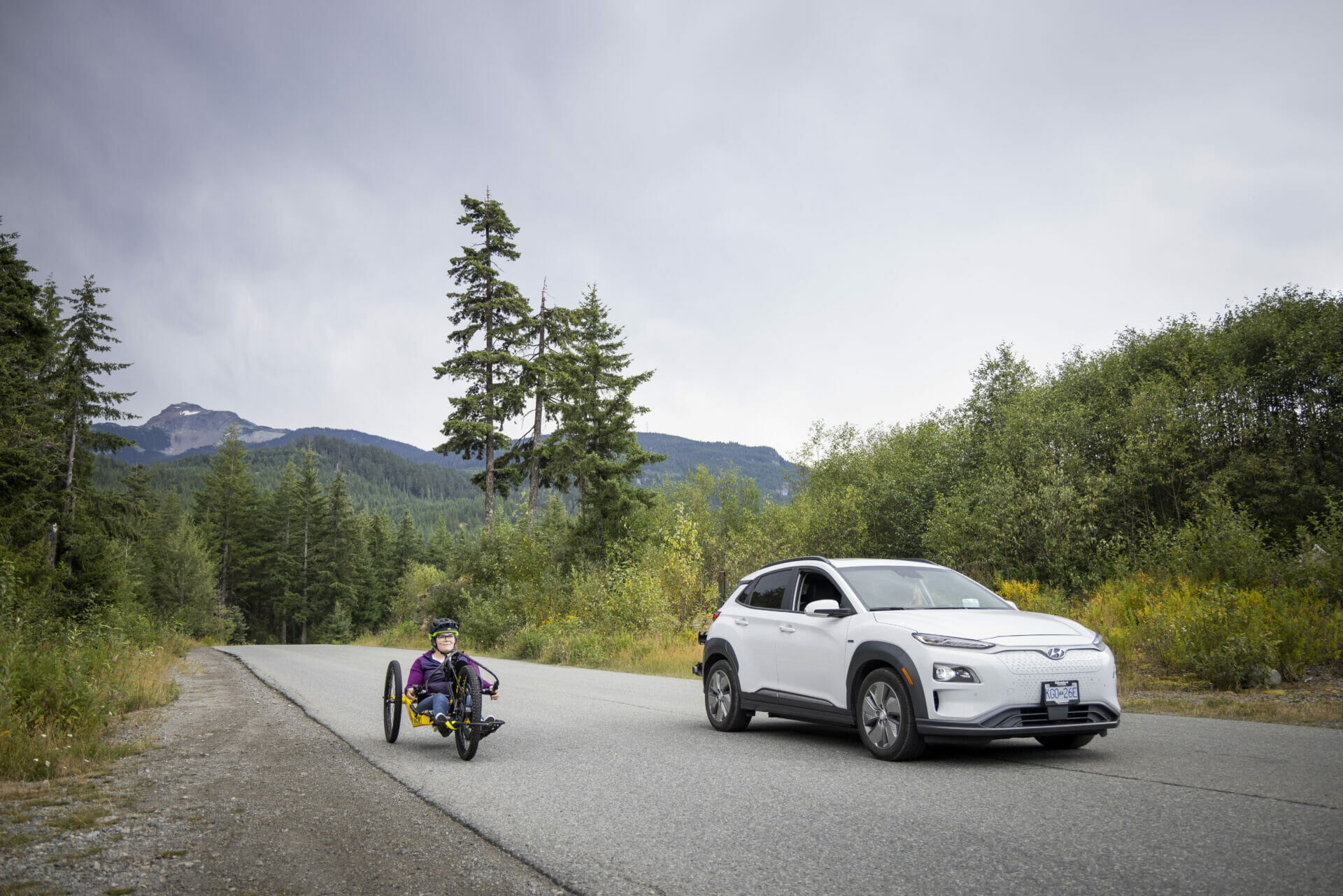Transit, active transportation and better building practices among top ways to target emissions
Efforts to reduce Greenhouse Gas (GHG) emissions to 50 per cent of 2007 levels by 2030 will require a coordinated effort within the resort to keep Whistler’s future front and centre, RMOW Council heard Tuesday.
The Annual GHG Inventory and Climate Action Progress Report shows community GHG emissions rose seven per cent year-over-year, and one per cent over 2019 levels, with the return to post-pandemic rhythms.
“Our Greenhouse Gas emissions are up, we’re not seeing a reduction of cars on our roads or natural gas use in our homes, and the leadership on high-impact actions is missing. Government and business have far more ability to create change than the individual, and we now have less than seven years to move the needle. So this report is our rallying call,” says Mayor Jack Crompton.
The report indicates passenger vehicles are responsible for 53 per cent of Whistler’s 138,859 tonnes of carbon dioxide equivalent and natural gas 48,979 tonnes, or 35 per cent. Half of Whistler residents self-report using transit or active transportation to commute to work, yet vehicular emissions are up 11 per cent this year and natural gas consumption is up five per cent, year-over-year, with still more accounts coming online.
“We’ve brought in several proactive policies to improve our construction practices, and we’re constantly working to increase transit ridership. This is a big challenge and we need to fully understand where and how we’re falling short to be effective,” says Crompton.
In December of 2022, Council adopted the Green Building Policy and this year amendments were made to the building and plumbing bylaw which speak to BC’s new Energy Step Code and Zero Carbon Step Code requirements.
Reporting on GHGs and climate action progress is done annually to provide a summary of Whistler’s community and the Resort Municipality of Whistler’s (RMOW’s) corporate GHG emissions for the calendar year, as well as progress towards the six Big Moves and three Adaptation goals. It also looks at the emissions the municipality controls directly, measuring municipal performance.
By consuming less diesel and adding electric bikes, municipal vehicular emissions decreased by four per cent in 2022, but the RMOW’s overall performance was not as strong with emissions up 11 per cent. A rise in natural gas consumption in buildings is responsible for most of this increase, primarily attributed to mechanical system inefficiencies at Meadow Park Sports Centre. This issue has been fixed and is being monitored.
In addition to natural gas consumption, the RMOW’s contract work emissions increased 32 per cent year-over-year. The sewage management system, meanwhile, saw a 19 per cent decrease, due to upgrades to the Cheakamus district energy system. A corporate GHG emissions plan is identified to set targets in line with Whistler’s Big Moves going forward.
Big Moves Report Card and Adaptation highlights:
- Big Move 1 and 2: Go beyond the car
- The municipality adopted a Transit Action Plan, is developing an active transportation plan, optimized bus Route 10, implemented a bike share program and bought 13 electric bikes for departments to reduce emissions.
- Big Move 2: Decarbonize passenger and commercial transportation (electric vehicles)
- The RMOW received the Clean BC Communities Fund grant and will install 41 Level 2 and DC/FC chargers between 2023 and 2025.
- Big Move 3: Visitor emissions
- Under the Smart Tourism Council priority staff are reviewing various destination management strategies to look at how visitors can help preserve and protect Whistler’s natural environment, and the Whistler 101 Series episode on climate changed was released.
- Big Move 4: Build zero emissions buildings
- The Green Building Policy was adopted, and the building and plumbing bylaw amended to advance the BC Energy Step Code and adopt the Zero Carbon Step Code.
- Big Move 5: Make existing buildings better
- The Retrofit Assist program relaunched in June to connect homeowners with resources and supports to retrofit homes, a workshop for hoteliers to do the same is planned for fall and work is underway to address municipal building energy efficiency.
- Adaptation Goal 1: Wildfire
- Ongoing FireSmart and fuel thinning is being done in and along the perimeter of high-risk neighbourhoods, and emergency plans are under revision with an emphasis on evacuations and signing people up for Whistler Alerts.
- Adaptation Goal 2: Increase resilience to extreme weather events
- A heat map has identified high risk zones where heat can concentrate—ie. in areas with an abundance of concrete—and correlated to vulnerable populations.
- Adaptation Goal 3: Protect local ecosystems and biodiversity
- The Priority Habitat Framework is in final draft—a strategy for protecting important natural habitat areas—and invasive species and ecosystem monitoring continues.
It is noted the most impactful ways to reduce GHGs will likely require inter-agency and inter-government partnership, including regional transit, additional transit service for Whistler, and priority lanes on the highway.
To read the full report, visit whistler.ca/climate-action

